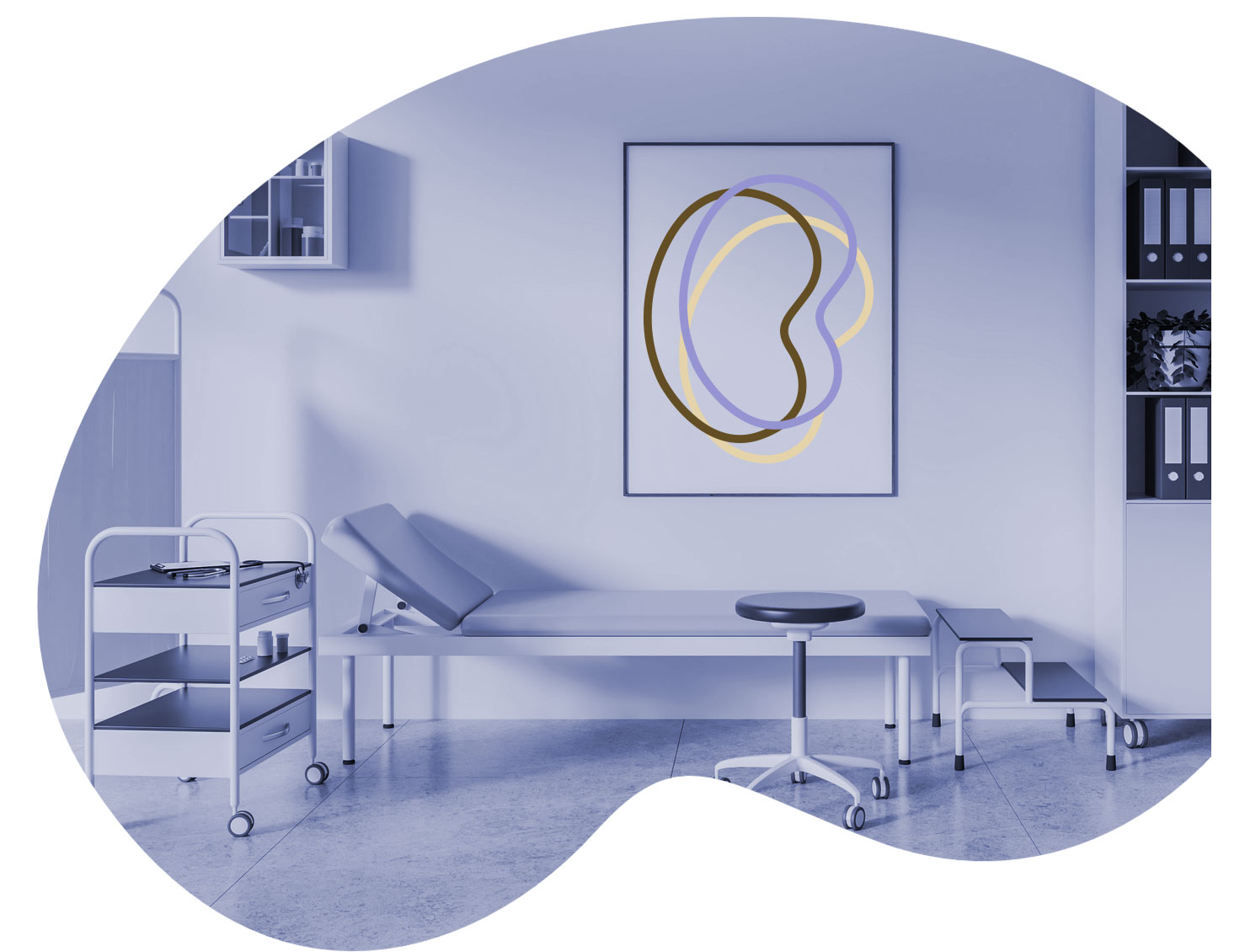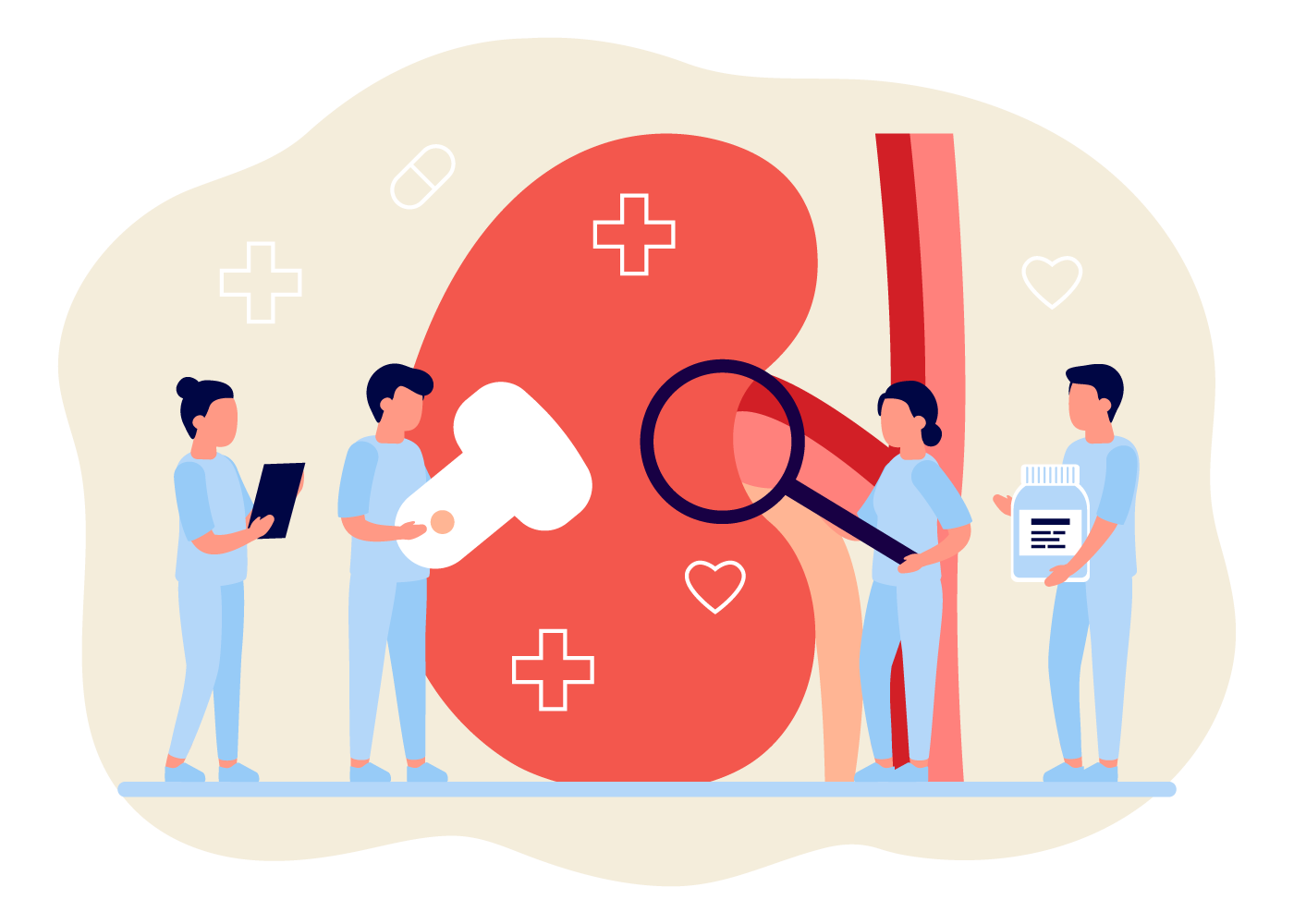Services
The following services are provided by a team of excellent doctors and nurses:

Outpatient Department
Consultative/Diagnostic Medical Care for patients following a referral from their Personal Doctor.
Systematic Monitoring of Kidney Patients at Various Stages of Renal Insufficiency.
What is Hemodialysis
During the process of hemodialysis, with the help of a specialized machine, blood containing waste metabolic substances such as urea, creatinine, and potassium is transported through a catheter (known as the arterial line) to a special filter that functions as a semi-permeable membrane. This allows for selective exchange of substances between the blood and the dialysate, while simultaneously removing excess fluids.
The purified blood returns to the patient through a second catheter (venous line). This process is repeated multiple times during the session, achieving fluid and electrolyte balance in the patient's blood. This process might require the prescription of necessary medications, such as vitamins, erythropoietin, and other therapeutic agents.
Various types of filters are used in hemodialysis to remove unwanted substances from the patient's blood. Depending on each patient's needs, the doctor selects the most suitable filter for each case.
The main advantages of hemodialysis include continuous supervision by medical and nursing staff without the need of specialized equipment at the patient's home. Standard hemodialysis sessions typically last for 4 hours and are conducted three times a week.
At NEMESOS Nephrology Clinic, each chronic illness patient is treated as an independent and active person. To ensure the best quality of life for our patients, we adhere to the principle of collaboration between patient, doctors and nursing staff.
NEMESOS Nephrology Clinic conducts dialysis treatments under the General Healthcare System (GHS), and the cost of hemodialysis sessions is fully covered by the GHS.
Main types of Hemodialysis:
The selection of the appropriate type of hemodialysis depends on the needs and condition of the patient, as well as the availability of resources and means.
Before your first hemodialysis session, a minor surgical procedure is required to gain access to your vascular system. There are three methods for gaining this access.
Fistula
An artery and a vein are surgically connected beneath your skin, providing a sustainable option for many years.
Graft
A plastic tube connects an artery and a vein beneath your skin, providing functionality for a few years.
Catheter
A flexible tube is inserted into a large vein in the neck or the thigh, primarily used for a short period.
During the process of hemodialysis, the patient's blood is used along with a filter and a special solution of fluids that aids in removing waste substances prevalent in the body, while simultaneously returning useful components back to the patient. Essentially, it is a closed – loop circuit that operates through a hemodialysis machine.


